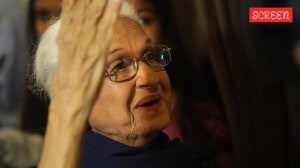Central bank digs up buried treasure
With a currency history dating back to 6th Century BC, it is only appropriate that the country’s financial capital have a monetary muse...

With a currency history dating back to 6th Century BC, it is only appropriate that the country’s financial capital have a monetary museum. Which is why the Reserve Bank of India (RBI), the country’s central bank, is digging into its vaults to showcase some rare exhibits of Indian coins, paper currency, gold bars as well as financial instruments and curiosities.
The museum will be located on the ground floor of Amar Building off the crowded Mint Road. ‘‘The site has been approved. We simply have to decide where to relocate our Publications Department, which is at Amar Building right now,’’ says Alpana Killawala, chief general manager of the RBI.
The museum aims at stimulating research on the evolution of money around the Indian Ocean Rim and disseminating information about currency, she says, adding that various old coins, currencies and gold bars are buried in the RBI’s vaults.
The idea of a monetary museum was sparked by visits to central banks in Europe and Australia. India is among the earliest countrys to issue coins. Foreign coins found here reveal Indian trade patterns in ancient, medieval and late pre-colonial times. The motifs on them also portray the cultural ethos of vast regions during different time periods.
In stark contrast, paper money traces its origin to the late 18th century, with currency notes being issued by private banks as well as semi-government banks.
Among the earliest banks were the Bank of Hindostan (1770-1832), the General Bank in Bengal and Bihar established by Warren Hastings in 1773-75 and the Bengal Bank (1784-91). Alas, few of these currency notes survive.
But for a delightful look at the survivors of history, just visit the RBI’s monetary museum.
|
Did You know?
|
||
|
• The Paper Currency Act, 1861, gave the Government of India the monopoly to issue currency notes Rehashing notes Story continues below this ad Fancy a Rs 2,000 pen stand for Rs 45? That’s no pricing mistake. You could pick up one of these, should the RBI decide to convert tonnes of torn and mutilated note-bricks into pen-stands, paperweights, softboards and even coffee trays. ‘‘We are scouting for vendors who can convert these paper bricks into mementos,’’ says Alpana Killawala. At present, the bricks are used as material for land-filings. —ENS |
||


- 01
- 02
- 03
- 04
- 05




























